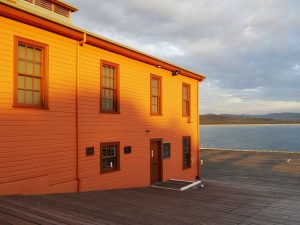
The sun rises on Tathra Wharf, photo from The Wharf Locavore
The record-breaking seas that slammed into the much loved Tathra Wharf in June 2016 have opened a new chapter in the history of this 150-year-old structure.
The timber that was salvaged from the wrecked sections of decking and pylons has been snapped up with a sense of reverence. A host of upcycled projects has been born spreading the affection for this Far South Coast icon.
Over the weekend of June 4 and 5 2016 waves of up to 17 meters high or more shattered timber and fixtures that had stood the test of time.
Protected from the more frequent rough weather of the south, the wharf was at the mercy of this north-easterly inspired weather event.
On the Monday morning that followed Bega Valley Shire Council confirmed that the timber ramp that leads from the roadway down to the old cargo platform had been lifted off its pylons by the monster seas.
A repair job estimated to be worth half a million dollars was launched, recognising the importance of this pinkish structure to the region’s tourist appeal and sense of identity.
Click on each photo to get a bigger view…


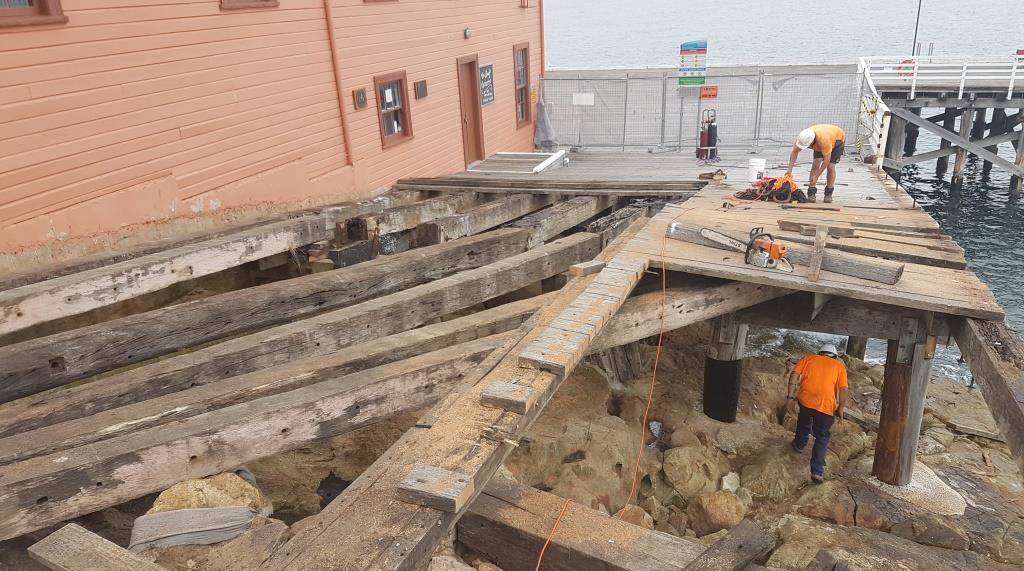

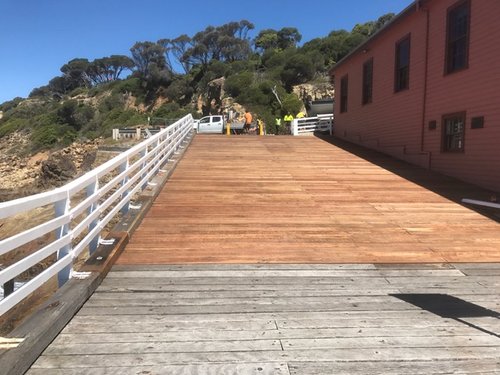
Any timber that could be repurposed at the wharf was, with poor decking in undamaged sections replaced with suitable timber from the damaged sections.
Some of the larger scale timbers salvaged remain in the Bega Valley Shire Council stockpile, ready for maintenance works on the 70 timber bridges that dot the shire.
The remaining timber was offered to the volunteers at the Tathra Wharf Museum.
Museum Secretary, Michelle Russell says the organisation has been able to sell some of the leftover timber as a fundraiser with some pieces seen as being sculpturally interesting.
“A lot of the timber has been sold to woodworkers,” she says.
Michelle has been surprised at the interest after first thinking the timber would be sold as firewood for winter.
“It’s a bit of history and that seems to be what people want,” she says.
Most of the load has been sold off, earning around $1500 for the museum. Some pieces have been kept as museum exhibits while others will end up keeping local homes warm during the months ahead.
Anthony Little, owner of Fat Tony’s Resturant on the hill above the wharf was one of those to snap up a chunk of Tathra Wharf.
“I remember climbing on the frame of the wharf as a kid and running down to see sharks pulled in by fisherman,” Ant says.
Three obscure hunks of rusted timber now sit in the front yard of Ant’s eatery, which was the former residence of the Tathra Harbourmaster; the last ship to take cargo from the wharf was the SS Cobargo in 1954.
“I’ll be putting up some display boards and mounting each piece properly to highlight the connection between this place [the harbourmaster’s residence] and the wharf,” Ant says.
Craftsman like Greg Wall and Peter Hull have given the salvaged timber a new use altogether.
“Some of this timber has seen 150 years of traffic, it’s too good for firewood,” Greg says.
The woodworker from Black Range has turned a mix old stringy bark, iron bark, and gray box into a mortise and tenon joint bookcase for the wharf museum.
“I wanted to construct the bookcase using the skills of the time, the skills of 150 years ago when the wharf was built,” Greg explains.
Tarraganda joiner, Peter Hull says it’s been a thrill working with such significant timber and turning it into vanity benchtops and mantle pieces.
“My clients have loved being able to share the story behind their new feature,” Peter says.
Click on each photo to get a bigger view…


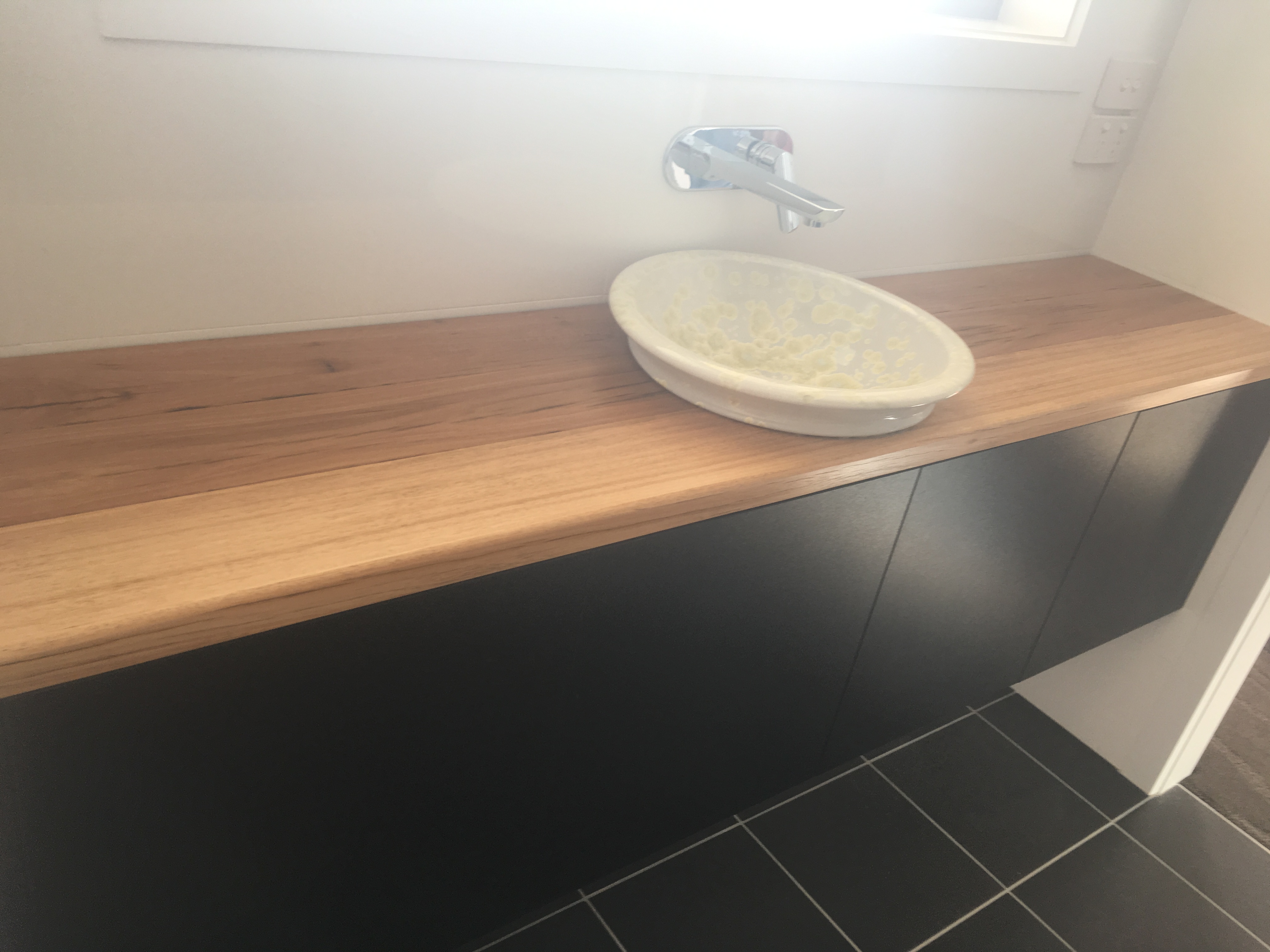
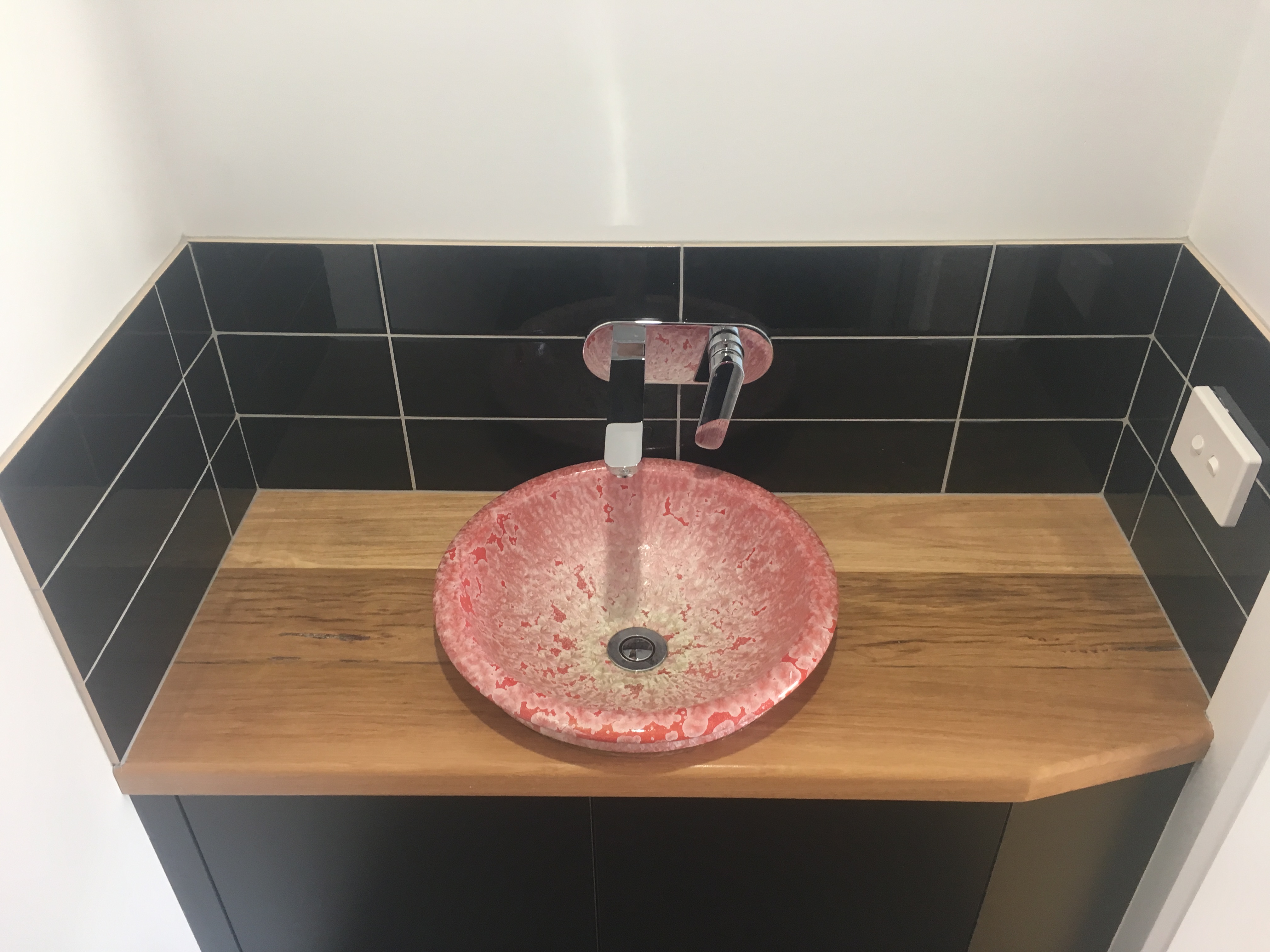


Apart from using its stockpiled timber in bridge structures, Bega Valley Shire Council plans on using some of its Tathra Wharf stash to make street furniture and gateway signage at the northern, southern, and western entries to the shire.
Some of the turpentine has already found bums in need of a seat in the Merimbula CBD and on the very structure it came from.
On her sunny verandah in Jellat, Museum Secretary, Michelle Russell is just happy to have a few lumps of the wharf to sit pot plants on.
“I have a family connection, Daniel Gowing was one of the first people involved in constructing the wharf,” Michelle says.
“I would like to thank Council for giving us [the museum] the timber because it’s been a great fundraiser,” she says.
“We haven’t decided what we are doing with the money yet, but we have a few projects in mind.”
Click on each photo to get a bigger view…



Apart from the acute damage that resulted from the East Coast Low of June last year, further assessments uncovered defects in 22 of the wharf’s 78 pylons. More work is needed to secure the structure’s long-term future especially in the face of increasingly testy seas.
Bega Valley Shire Council and the NSW Government are considering their options.
“We figure it’s been there a long time and will continue there for a long time yet,” Michelle Russell says.
“Mostly because the community considers it to be so important, it’ll be there in another 150 years I am sure.”
For those who don’t have a piece of Tathra Wharf as their own yet, small chunks are available for purchase from the Tathra Wharf Museum, which is open 10am to 4pm Saturday and Sunday.
Disclaimer – author is part time media officer for Bega Valley Shire Council.







